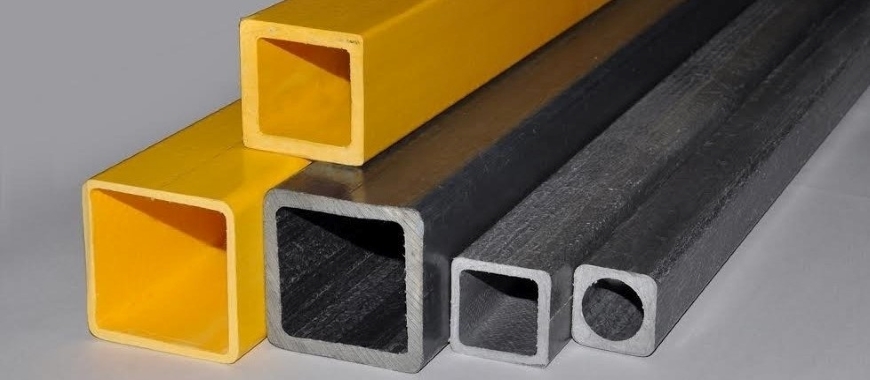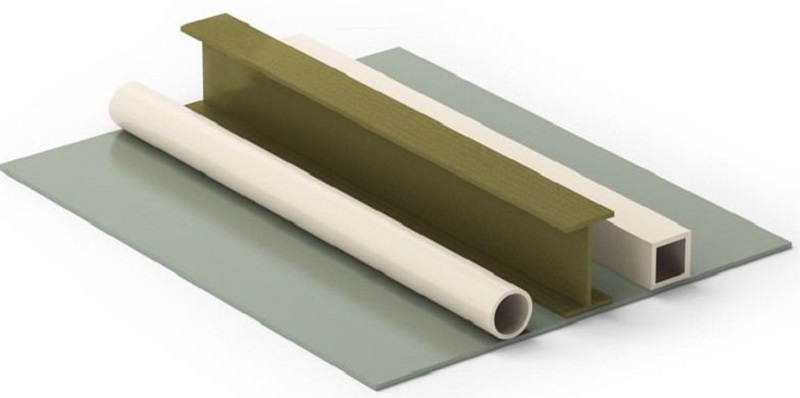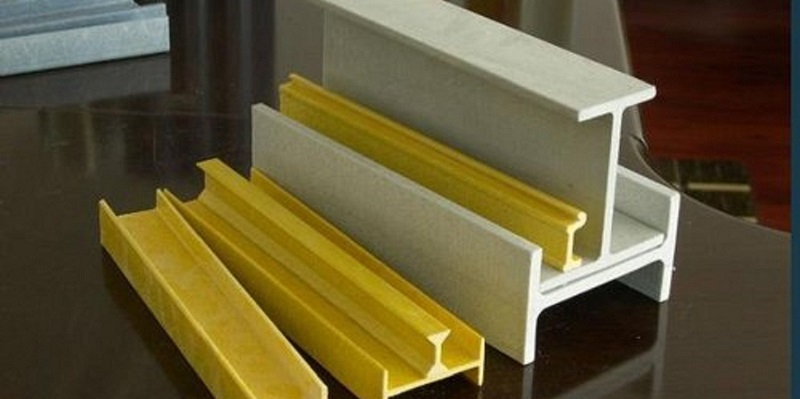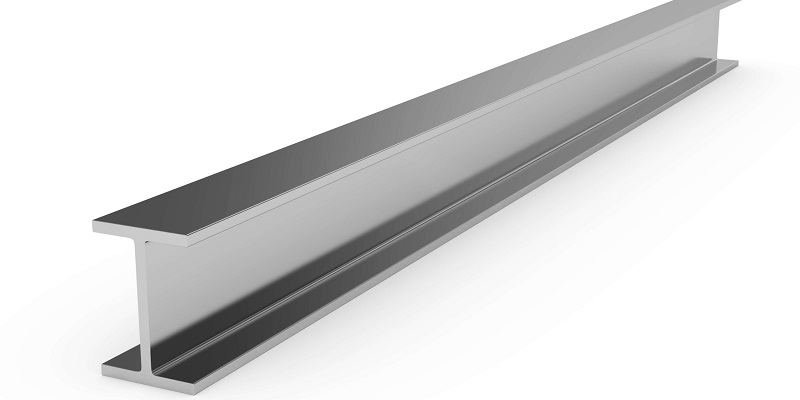
Wide flange beam fiberglass, also called fiberglass W beams, offers several advantages that make it ideal for structural applications. One of the main benefits is its high strength-to-weight ratio, meaning it provides excellent support while remaining lightweight. This makes it easier to transport and install, reducing labor and equipment costs. Additionally, wide flange beam fiberglass is highly resistant to corrosion, making it perfect for use in harsh environments, such as coastal or industrial areas. Its durability ensures long-lasting performance with minimal maintenance, making it a cost-effective solution over time. These features make wide flange beam fiberglass a versatile choice for construction projects where reliability is key. Wide flange beam fiberglass is lightweight, strong, rust-resistant, non-conductive, and durable, ideal for truck floors, columns, and supports.
Wide Flange Beam Fiberglass: Revolutionizing Structural Support
Wide flange beam fiberglass is a groundbreaking material in the field of construction, providing a strong, lightweight, and corrosion-resistant alternative to traditional materials like steel and wood. Produced by manufacturers such as GangLong Fiberglass, these beams offer exceptional versatility and durability for various applications, ranging from commercial buildings to residential projects. The unique properties of wide flange beam fiberglass make it an ideal choice for environments where traditional materials might falter, such as in corrosive or moisture-rich settings.

What Are Wide Flange Beam Fiberglass Structures?
Wide flange beam fiberglass structures are engineered beams designed to provide superior strength and support in construction projects. Unlike traditional steel beams, which can be heavy and prone to corrosion, wide flange beam fiberglass is constructed from a composite of fiberglass and resin, creating a material that is both lightweight and exceptionally durable. The design of these beams includes a wide flange, which provides increased stability and load distribution, making them suitable for a range of structural applications.
The wide flange design of these fiberglass beams allows them to bear heavy loads while maintaining a low weight-to-strength ratio. This characteristic is particularly beneficial in construction projects where reducing the overall weight of the structure is a priority. Whether used in the construction of bridges, walkways, or building frameworks, wide flange beam fiberglass offers the necessary support without adding unnecessary weight to the structure.
The manufacturing process of wide flange beam fiberglass involves the use of pultrusion technology, where continuous strands of fiberglass are pulled through a resin bath and shaped into the desired profile. This process ensures that the beams have a consistent cross-section and high strength along their entire length. The result is a structural element that combines the best properties of fiberglass—strength, corrosion resistance, and lightweight—with the functional design of a wide flange beam.
Wide Flange Beam Fiberglass: A Versatile Structural Solution
Wide flange beam fiberglass is a key material in modern construction and engineering projects, offering numerous advantages due to its unique composition and properties. Made from fiberglass reinforced plastic (FRP), this beam type is designed to support large loads while maintaining its integrity under harsh environmental conditions. As a lightweight, corrosion-resistant, and durable option, wide flange beam fiberglass is a preferred choice for various industries, including construction, marine, industrial, and civil engineering.
Benefits of Wide Flange Beam Fiberglass in Construction
The use of wide flange beam fiberglass in construction projects brings a host of benefits, particularly in terms of durability, ease of installation, and resistance to environmental factors. These advantages make fiberglass beams a preferred choice for engineers and architects seeking long-lasting, reliable structural solutions.
Corrosion Resistance: Wide flange beam fiberglass is highly resistant to rust, rot, and chemical degradation, making it ideal for environments where metal beams might corrode or deteriorate. This includes coastal regions, industrial plants, and wastewater treatment facilities. Fiberglass beams remain structurally sound in such environments, same as fiberglass tie beams, ensuring the long-term stability of the building or structure.
Lightweight and High Strength: Wide flange beam fiberglass is known for its excellent strength-to-weight ratio. Despite being significantly lighter than steel, fiberglass beams can support heavy loads, making them suitable for various load-bearing applications. The lightweight nature of fiberglass beams also makes them easier to transport and install, reducing labor costs and simplifying the construction process. This feature is particularly advantageous in projects where speed and efficiency are essential, such as in the construction of temporary structures or when working in challenging terrains.
Non-Conductive and Safe: Fiberglass is a non-conductive material, which means that wide flange beam fiberglass does not conduct electricity. This property makes fiberglass beams an ideal choice for structures where electrical safety is a concern, such as in power plants, electrical substations, and areas near high-voltage equipment. The non-conductive nature of fiberglass enhances safety by reducing the risk of electrical shocks, making it a safer alternative to metal beams in such environments.
Low Maintenance: Unlike traditional materials like wood or steel, wide flange beam fiberglass requires minimal maintenance. It does not need to be painted or treated to protect it from the elements, and it is resistant to moisture, UV radiation, and chemical exposure. This low maintenance requirement translates to long-term cost savings, as there is no need for regular inspections, repainting, or repairs. Structures built with fiberglass beams can withstand harsh conditions without the need for frequent upkeep, making them an economical choice for long-term projects.
Structural Benefits of Fiberglass Angle Strips in Construction
Fiberglass angle strips are another essential component in modern construction, often used alongside wide flange beam fiberglass to provide additional structural support. These strips are made from the same FRP material, offering the same benefits of corrosion resistance, strength, and lightweight design.
Fiberglass angle strips are typically used in framing and reinforcement, particularly in areas where additional support is needed. They are commonly found in the corners of structures, where they help distribute loads evenly and reinforce the integrity of the frame. When used in conjunction with wide flange beam fiberglass, they enhance the overall stability of the structure by providing extra support at critical points.
One of the key advantages of fiberglass angle strips is their ability to maintain their shape and strength under stress. Unlike metal, which can warp or bend over time, fiberglass remains rigid and strong, even under heavy loads. This makes fiberglass angle strips ideal for use in large-scale industrial and commercial projects, where structural integrity is critical.
The Key of Using Wide Flange Beam Fiberglass in Future Construction
The use of wide flange beam fiberglass in construction is expected to grow as more industries recognize the material’s benefits. Its strength, durability, and resistance to environmental factors make it an ideal choice for a wide range of applications, from industrial plants to civil engineering projects.
In the future, advancements in FRP technology may lead to even stronger and more versatile fiberglass beams, further expanding their use in construction. As sustainability becomes a more significant focus in the industry, the lightweight nature of wide flange beam fiberglass will also become more attractive, as it reduces transportation costs and the overall environmental impact of construction projects.
Wide flange beam fiberglass is already proving to be a valuable asset in the construction and engineering world, offering a reliable, low-maintenance solution for building durable structures that stand the test of time. Whether used in commercial buildings, industrial plants, or civil engineering projects, this material provides the strength and flexibility needed to meet the demands of modern construction.
By choosing wide flange beam fiberglass, builders and engineers are investing in a material that offers long-term durability, reduced maintenance costs, and environmental resilience, ensuring that their projects remain strong and stable for years to come.
The Versatility of Structural Plastic Panels in Construction
Structural plastic panels complement wide flange beam fiberglass in various construction applications, providing additional strength, insulation, and aesthetic appeal. These panels are often used in conjunction with fiberglass beams to create durable, weather-resistant structures that can withstand the elements while maintaining their integrity.
Overview of How Structural Plastic Panels Complement Fiberglass Beams: Structural plastic panels are designed to integrate seamlessly with wide flange beam fiberglass in construction projects. These panels can be attached to the beams to form walls, floors, and roofs, creating a cohesive and robust structure. The combination of fiberglass beams and plastic panels results in a construction system that is not only strong and durable but also resistant to moisture, chemicals, and UV radiation. This makes the system suitable for use in environments where traditional building materials might deteriorate or require extensive maintenance.
Benefits of Using Plastic Panels in Conjunction with Wide Flange Beams: The use of structural plastic panels with wide flange beam fiberglass offers several advantages. First, the panels provide an additional layer of protection against the elements, enhancing the overall durability of the structure. They can also be used to improve the insulation properties of the building, contributing to energy efficiency. Furthermore, plastic panels are available in various colors, textures, and finishes, allowing for customization and aesthetic versatility in design. When combined with the structural strength of fiberglass beams, these panels help create a building that is not only functional but also visually appealing.
Common Use Cases in Commercial and Residential Projects: Common Use Cases in Commercial and Residential Projects: Wide flange beam fiberglass and structural plastic panels are used in various commercial and residential construction projects. In commercial settings, they are commonly used in the construction of warehouses, industrial facilities, and marine structures. The corrosion resistance and high strength of wide flange fiberglass beams make them ideal for these applications, where exposure to moisture and chemicals is common. In residential projects, wide flange fiberglass beams, including fiberglass porch beams, are frequently used to construct decks, porches, and other outdoor structures. The lightweight nature of these beams also makes them a preferred choice for prefabricated homes and modular buildings, where ease of transportation and assembly is essential.
The Key of Fiberglass Reinforced Plastic Structural Shapes in Engineering
Fiberglass reinforced plastic (FRP) has emerged as an essential material in structural engineering due to its excellent strength, flexibility, and resistance to environmental factors. FRP is a composite material made by embedding glass fibers into a plastic resin matrix. This combination results in a material that is lightweight, strong, and highly resistant to environmental stressors, including chemicals, moisture, and UV exposure.
In structural engineering, FRP is used to create a variety of shapes, including wide flange beams, I-beams, channels, and angles. These shapes are utilized in projects that require high load-bearing capacity and long-term durability. Wide flange beam fiberglass is one of the most commonly used FRP structural components because it can handle significant loads while remaining lightweight and easy to install.
Versatility of Wide Flange Beam Fiberglass in Civil Engineering Projects
In civil engineering, wide flange beam fiberglass plays a vital role in the construction of bridges, tunnels, and other infrastructure projects. Its lightweight nature makes it easier to transport and install, even in remote or difficult-to-access areas. In bridge construction, for example, fiberglass beams can be used to create lightweight yet strong support structures, reducing the overall weight of the bridge while maintaining its load-bearing capacity.
Wide flange beam fiberglass is also ideal for tunnel linings, where corrosion resistance is critical due to the constant exposure to moisture. In addition, the beams’ non-conductive properties make them a safe choice for tunnels that contain electrical systems or other sensitive equipment.
Another application in civil engineering is the use of wide flange beam fiberglass in retaining walls and barriers. These beams are used to create long-lasting, corrosion-resistant barriers that can withstand the elements without requiring frequent maintenance. This makes them an excellent choice for projects in coastal areas, where saltwater exposure can cause rapid deterioration in traditional materials.
Importance of Wide Flange Beam Fiberglass in Construction
The importance of wide flange beam fiberglass in modern construction cannot be overstated. Its unique combination of properties offers several key benefits that address many of the challenges faced by engineers and architects when selecting materials for structural support.
Strength and Load-Bearing Capacity
Wide flange beam fiberglass is designed to bear significant loads, making it an ideal choice for a variety of structural applications. The wide flange design distributes weight evenly across the beam, reducing stress concentrations and providing enhanced support for floors, roofs, and other structural components. This load-bearing capacity is critical in applications such as bridges, industrial platforms, and high-rise buildings where structural integrity is paramount.
Despite its lightweight nature, wide flange beam fiberglass exhibits a high strength-to-weight ratio, allowing it to support heavy loads without adding unnecessary weight to the structure. This property is particularly valuable in construction projects where minimizing the overall weight of the building is a priority, such as in prefabricated structures, modular buildings, and retrofitting projects.
Corrosion Resistance
One of the most significant advantages of wide flange beam fiberglass is its inherent resistance to corrosion. Unlike steel beams, which can rust and degrade when exposed to moisture, saltwater, or harsh chemicals, fiberglass beams remain unaffected by these environmental factors. This corrosion resistance makes wide flange beam fiberglass an ideal choice for structures in coastal regions, chemical plants, wastewater treatment facilities, and other environments where exposure to corrosive substances is a concern.
The longevity and durability of wide flange beam fiberglass reduce the need for maintenance and repair, contributing to the overall sustainability of the structure. By selecting a material that can withstand the rigors of harsh environments without compromising structural integrity, engineers and builders can ensure the safety and longevity of their projects.
Electrical Insulation and Safety
Fiberglass is a non-conductive material, which means that wide flange beam fiberglass does not conduct electricity. This property is essential in applications where electrical safety is a concern, such as in power plants, electrical substations, and areas near high-voltage equipment. Using fiberglass beams in these settings reduces the risk of electrical shocks and other hazards, enhancing the overall safety of the structure.
Additionally, the non-magnetic nature of fiberglass makes it suitable for use in environments where electromagnetic interference must be minimized, such as in research facilities, hospitals, and data centers. The use of wide flange beam fiberglass in these applications provides the necessary structural support while maintaining a safe and interference-free environment.
Design Flexibility with Wide Flange Beam Fiberglass
Wide flange beam fiberglass offers significant design flexibility, allowing architects and engineers to create structures that are both functional and aesthetically pleasing. The material’s versatility means it can be molded into various shapes and sizes, making it suitable for a wide range of architectural designs.
Customizable Sizes and Shapes: Wide flange beam fiberglass can be manufactured in various sizes and shapes to meet the specific requirements of a construction project. GangLong Fiberglass offers a range of beam profiles and dimensions, ensuring that the right beam can be selected for each application. This customization capability allows for the design of structures with unique architectural features, such as curved roofs, angled walls, and complex frameworks. The ability to tailor the size and shape of the beams to the project’s needs enhances both the structural integrity and visual appeal of the final construction.
Integration with Other Materials: In addition to its compatibility with structural plastic panels, wide flange beam fiberglass can be integrated with other construction materials, such as glass, concrete, and metal. This integration allows for the creation of hybrid structures that leverage the strengths of multiple materials. For example, fiberglass beams can be used as a structural framework for glass facades, providing support without obstructing the view. In industrial settings, fiberglass beams can be combined with metal grating to create platforms and walkways that are both strong and corrosion-resistant.
Architectural Aesthetics: The use of wide flange beam fiberglass in construction is not limited to functional applications; it also offers opportunities for enhancing the aesthetics of a building. Fiberglass beams can be finished with various surface textures and colors, allowing them to blend seamlessly with the surrounding environment or stand out as a design feature. This aesthetic versatility makes fiberglass beams suitable for use in architectural projects where appearance is just as important as performance.
Long-Term Performance and Sustainability
Wide flange beam fiberglass is designed for long-term performance, making it a sustainable choice for construction projects. Its durability, low maintenance requirements, and resistance to environmental factors contribute to its longevity, reducing the need for frequent repairs or replacements.
Durability and Longevity: The inherent strength and resistance of fiberglass make wide flange beam fiberglass a durable option for structures exposed to harsh conditions. Whether used in coastal areas, industrial sites, or high-traffic public spaces, fiberglass beams can withstand the challenges posed by the environment without losing their structural integrity. This durability extends the lifespan of the structure, ensuring that it remains safe and functional for many years.
Environmental Sustainability: Wide flange beam fiberglass is an environmentally sustainable construction material. The production of fiberglass beams involves less energy consumption compared to traditional steel manufacturing processes, resulting in a lower carbon footprint. Additionally, the long lifespan and low maintenance requirements of fiberglass beams mean that fewer resources are needed for repairs and replacements over time. By choosing fiberglass beams, builders and developers can contribute to sustainable construction practices that minimize environmental impact.
Manufacturing Techniques for Thin Wall Fiberglass Tubing
Installation and Maintenance of Wide Flange Beam Fiberglass
The installation and maintenance of wide flange beam fiberglass are straightforward, contributing to the material’s appeal in construction projects. Its lightweight nature and ease of handling make it easier to transport and install, even in challenging locations.
Ease of Installation: Wide flange beam fiberglass is significantly lighter than steel, making it easier to handle and install on-site. This lightweight property reduces the need for heavy machinery and specialized equipment, streamlining the construction process and reducing labor costs. The beams can be cut, drilled, and fastened using standard tools, allowing for quick and efficient assembly. This ease of installation is particularly beneficial in projects with tight deadlines or where access to the construction site is limited.
Low Maintenance Requirements: Once installed, wide flange beam fiberglass requires minimal maintenance. Its resistance to corrosion, moisture, and UV radiation means that it does not need to be painted, treated, or protected with coatings. Routine inspections are generally sufficient to ensure that the beams remain in good condition, making them an economical choice for long-term use. This low maintenance requirement also reduces the overall cost of ownership.

What Should Pay Attention to When Installing and Using Wide Flange Beam Fiberglass?
When installing and using wide flange beam fiberglass, it is essential to ensure proper handling, storage, and installation to maintain its structural integrity and performance. This material is lightweight, durable, and resistant to rust and harsh environmental conditions, but specific precautions, such as avoiding surface damage during handling and ensuring secure alignment during installation, are necessary for optimal use. By adhering to recommended guidelines, you can maximize the efficiency and longevity of fiberglass beams in various applications.
When installing and using wide flange beam fiberglass, consider the following:
- Handling and Storage:
- Avoid dragging to prevent surface damage.
- Store in a dry, flat area to prevent warping or cracking.
- Cutting and Drilling:
- Use appropriate tools (e.g., carbide-tipped blades).
- Wear protective gear to avoid fiberglass dust exposure.
- Support and Alignment:
- Ensure proper alignment to prevent stress points.
- Use recommended brackets and fasteners for secure connections.
- Load Capacity:
- Follow manufacturer specifications for load limits.
- Avoid overloading to maintain structural integrity.
- Environmental Considerations:
- Protect from prolonged UV exposure unless UV-resistant coatings are applied.
- Ensure compatibility with chemical environments if applicable.
- Installation:
- Use non-conductive hardware if electrical insulation is required.
- Secure beams evenly to prevent uneven stress distribution.
- Inspection and Maintenance:
- Periodically inspect for damage or wear.
- Clean using mild detergents; avoid harsh chemicals that may degrade the material.
- Thermal Expansion:
- Account for slight expansion or contraction due to temperature changes.
Adhering to these guidelines ensures durability, performance, and safety.
Long-Term Performance and Maintenance of Wide Flange Beam Fiberglass
Wide flange beam fiberglass is designed for long-term performance, providing a durable and reliable solution for structural support in a variety of environments.
Durability and Low Maintenance
Wide flange beam fiberglass is known for its durability and low maintenance requirements. Its resistance to corrosion, moisture, and chemicals ensures that the beams remain in good condition even in harsh environments. Unlike steel beams, which require regular painting and maintenance to prevent rust and corrosion, fiberglass beams do not need protective coatings or treatments.
The low maintenance nature of wide flange beam fiberglass translates into cost savings over the lifespan of the structure. By reducing the need for frequent inspections, repairs, and replacements, fiberglass beams contribute to the overall sustainability and cost-effectiveness of construction projects.
Environmental Sustainability
In addition to its durability and performance, wide flange beam fiberglass is an environmentally sustainable construction material. The production of fiberglass beams requires less energy compared to the manufacturing of steel, resulting in a lower carbon footprint. Additionally, the long lifespan of fiberglass beams reduces the need for replacement materials, further minimizing the environmental impact.
The use of wide flange beam fiberglass in construction contributes to sustainable building practices by promoting the use of materials that are both durable and environmentally friendly. This aligns with the growing demand for green construction solutions that prioritize energy efficiency, resource conservation, and reduced environmental impact.
Applications of Wide Flange Beam Fiberglass in Industrial Settings
Wide flange beam fiberglass is widely used in industrial applications, where structures are often exposed to harsh conditions such as chemicals, high humidity, and extreme temperatures. In such environments, traditional materials like steel or wood can degrade quickly, leading to frequent repairs or replacements. Fiberglass beams, on the other hand, offer a reliable and long-lasting alternative.
In industrial plants, wide flange beam fiberglass is commonly used in platforms, walkways, and support structures. The beams’ resistance to chemical corrosion makes them suitable for use in facilities where exposure to acids, solvents, or other harsh chemicals is common. Additionally, their non-conductive properties are valuable in environments where electrical insulation is a priority, such as in electrical substations or power plants.
Marine environments are another area where wide flange beam fiberglass excels. In ports, docks, and offshore platforms, the beams are used to support structures that are constantly exposed to saltwater, which can cause rapid corrosion in metal components. Fiberglass beams remain unaffected by saltwater exposure, ensuring the stability and longevity of these structures.
Applications of Fiberglass Angle Strips in Structural Designs
Fiberglass angle strips play a crucial role in structural designs, particularly when used in conjunction with wide flange beam fiberglass. These angle strips are designed to reinforce and support structures, providing additional strength and stability in various construction applications.
Importance of Fiberglass Angle Strips in Supporting Structures
Fiberglass angle strips are essential components in supporting structures, offering additional reinforcement at critical points such as joints, corners, and connections between beams. They are often used to enhance the load-bearing capacity of a structure, distributing stress and preventing deformation or failure.
When used with wide flange beam fiberglass or hex beam fiberglass, angle strips contribute to the overall integrity of the structure by providing added support where it is needed most. For example, in bridge construction, fiberglass angle strips can be used to reinforce the connections between beams and support columns, ensuring that the structure can withstand dynamic loads and environmental stresses.
Typical Uses in Reinforcement for Industrial and Commercial Buildings
In industrial and commercial buildings, fiberglass angle strips are commonly used to reinforce beams, columns, and other structural elements. They provide additional support in areas that are subject to heavy loads, such as mezzanine floors, loading docks, and storage facilities. The lightweight nature of fiberglass angle strips makes them easy to install without adding significant weight to the structure.
Fiberglass angle strips are also resistant to corrosion, moisture, and chemicals, making them ideal for use in harsh environments such as factories, warehouses, and chemical processing plants. By reinforcing wide flange beam fiberglass with angle strips, engineers can create structures that are not only strong and durable but also resistant to the wear and tear associated with industrial operations.
Integration with Wide Flange Beams for Added Stability
The integration of fiberglass angle strips with wide flange beam fiberglass enhances the stability and load-bearing capacity of the structure. Angle strips can be attached to the beams to provide additional support at points where stress is concentrated, such as at beam ends, joints, and intersections with other structural elements. This integration creates a cohesive and robust framework that can withstand dynamic loads, seismic activity, and other forces that may affect the structure over time.
Using fiberglass angle strips in conjunction with wide flange beam fiberglass allows for the design of complex structures that require both flexibility and strength. For instance, in modular construction, where components are assembled on-site, the combination of beams and angle strips provides the necessary support to ensure that the modules are securely connected and able to bear the intended loads.
Key Advantages of Using Hollow Fiberglass Tube in Construction
How Structural Plastic Panels Enhance Wide Flange Beam Fiberglass Structures
Structural plastic panels are often used in combination with wide flange beam fiberglass to create fully integrated, corrosion-resistant structures. These panels, made from high-strength plastic materials, are used to cover or reinforce the beams, adding another layer of protection against environmental stressors.
In construction, structural plastic panels can be used as cladding or wall systems, providing a durable, lightweight alternative to traditional building materials. When used in conjunction with wide flange beam fiberglass, these panels enhance the structure’s overall strength and durability, making them ideal for use in harsh environments such as chemical plants, marine facilities, or wastewater treatment plants.
The combination of wide flange beam fiberglass and structural plastic panels offers a comprehensive solution for builders and engineers who need materials that are both lightweight and strong, resistant to corrosion, and easy to install. This combination also reduces maintenance requirements, leading to long-term cost savings for the project.
Enhanced Durability
- Problem: Traditional materials like wood or metal in composite structures are prone to degradation from moisture, corrosion, and insect damage.
- Solution: Structural plastic panels, paired with wide flange beam fiberglass, create a resilient structure that resists water absorption, chemical exposure, and environmental decay.
Improved Load Distribution
- Problem: Uneven load distribution can lead to stress concentrations, reducing the lifespan of a structure.
- Solution: Plastic panels, when installed with fiberglass beams, provide a lightweight yet robust surface that evenly distributes loads, preventing localized stress or failure.
Increased Flexibility in Design
- Problem: Complex designs require materials that are both versatile and structurally sound. Traditional materials may not meet this requirement effectively.
- Solution: Structural plastic panels complement the high strength and flexibility of fiberglass beams, enabling more complex and customized structural designs.
Reduced Maintenance
- Problem: Structures in harsh environments often require frequent maintenance due to wear, rust, and structural fatigue.
- Solution: Both fiberglass beams and plastic panels are low-maintenance, non-corrosive materials that perform exceptionally well in harsh conditions, reducing the need for regular repairs.
Enhanced Thermal and Electrical Insulation
- Problem: Traditional metal structures conduct heat and electricity, which can pose safety and efficiency issues in specific applications.
- Solution: Plastic panels and fiberglass beams are non-conductive and thermally stable, making them ideal for environments where insulation is critical.
Weight Reduction
- Problem: Heavy structures increase transportation and installation costs and limit their use in lightweight designs.
- Solution: Both materials are significantly lighter than metal alternatives, reducing overall weight while maintaining structural integrity.
Sustainability
- Problem: The demand for eco-friendly construction materials is growing, but traditional materials often have a high environmental impact.
- Solution: Many structural plastic panels are recyclable, and fiberglass beams have a long service life, reducing the need for replacements and minimizing waste.
By combining structural plastic panels with wide flange beam fiberglass, engineers can create high-performance structures that are durable, efficient, and versatile, meeting the demands of modern construction while addressing traditional material limitations.
Essential Uses of Filament Wound Fiberglass Tubing in Industry
Wide Flange Beam Fiberglass Customization
Wide flange beam fiberglass has emerged as a transformative material in structural engineering, providing unmatched strength, versatility, and durability in a range of construction applications. This innovative material, manufactured by companies such as GangLong Fiberglass, combines the strength and flexibility of traditional steel beams with the corrosion resistance and lightweight properties of fiberglass. Its unique attributes make it suitable for various environments, especially where traditional materials like steel or wood may not be ideal due to their limitations in corrosion resistance, weight, and maintenance needs.

Customization Options for Wide Flange Beam Fiberglass
One of the many benefits of using wide flange beam fiberglass is the ability to customize the beams to suit specific project needs. GangLong Fiberglass, for example, offers a wide range of customization options, allowing customers to choose the length, width, and strength of the beams to meet their particular requirements.
Custom beams can be designed to handle specific loads or environmental conditions, ensuring that the structure is built to last in even the harshest environments. Whether the project requires beams that are resistant to extreme temperatures, chemicals, or UV exposure, wide flange beam fiberglass can be tailored to meet those demands.
In addition to custom sizing, customers can also choose from various finishes and coatings that further enhance the beams’ durability and aesthetic appeal. These options ensure that the wide flange beam fiberglass fits seamlessly into the overall design of the structure, providing both functionality and style.
Design and Customization of Wide Flange Beam Fiberglass
The design and customization of wide flange beam fiberglass are key factors that contribute to its versatility in construction. GangLong Fiberglass offers a range of beam sizes, profiles, and finishes to meet the specific requirements of different projects.
Customizable Profiles and Sizes
Wide flange beam fiberglass can be manufactured in various profiles and sizes, allowing engineers and architects to select the most suitable beam for their specific application. The ability to customize the beam’s dimensions ensures that it can provide the required support and load-bearing capacity for the structure.
For projects with unique architectural designs or complex structural requirements, wide flange beam fiberglass can be fabricated to custom specifications. This customization enables the creation of structures with intricate shapes, curves, and angles while maintaining the strength and stability of the beams.
Integration with Other Materials
Wide flange beam fiberglass can be integrated with other construction materials, such as concrete, steel, and glass, to create hybrid structures that leverage the strengths of each material. This integration allows for innovative design solutions that combine the corrosion resistance and lightweight properties of fiberglass with the load-bearing capacity and rigidity of other materials.
For example, in bridge construction, wide flange beam fiberglass can be used as the main structural support, while concrete or steel is used for decking and surface reinforcement. This combination results in a structure that is both strong and resistant to environmental factors, ensuring long-term performance and safety.
Wide Flange Beam Fiberglass and Other Structural Variants
Fiberglass beams come in a variety of structural types, each designed to suit specific applications and engineering requirements. In addition to wide flange beam fiberglass, other common types include I-beams, channel beams, and box beams. Understanding their unique characteristics and differences is essential for selecting the right type for a project.
Wide Flange Beam Fiberglass
- Structure: Features a wide top and bottom flange with a vertical web connecting them, offering a large surface area for load distribution.
- Applications: Ideal for heavy-duty applications like columns, truck trailer supports, and industrial flooring where a large load-bearing capacity is required.
- Advantages: High strength-to-weight ratio, excellent stability under heavy loads, and resistance to rust and corrosion.
I-Beam Fiberglass
- Structure: Similar to the wide flange beam but with narrower flanges and a thinner web.
- Applications: Commonly used in structural frameworks, bridges, and lightweight construction where moderate loads are involved.
- Advantages: Lightweight, cost-effective, and suitable for less demanding load-bearing applications.
- Differences from Wide Flange Beam: Narrower flanges make I-beams less effective at handling lateral loads compared to wide flange beams.
Channel Beam Fiberglass
- Structure: U-shaped cross-section with a flat base and two vertical sides.
- Applications: Used in framing, edge protection, and bracing for lightweight structures.
- Advantages: Easy to integrate with other components and lightweight.
- Differences from Wide Flange Beam: Limited load-bearing capacity and less stability under heavy loads compared to wide flange beams.
Box Beam Fiberglass
- Structure: Hollow rectangular or square cross-section, offering a closed structure.
- Applications: Ideal for applications requiring high torsional resistance, such as bridges, towers, or high-strength frameworks.
- Advantages: Exceptional rigidity, resistance to twisting, and uniform strength in all directions.
- Differences from Wide Flange Beam: More resistant to torsion but generally heavier and more material-intensive.
Angle Beam Fiberglass
- Structure: L-shaped cross-section with two legs forming a 90-degree angle.
- Applications: Commonly used as bracing, framing, or supports in lightweight applications.
- Advantages: Easy to cut and install, suitable for reinforcing corners.
- Differences from Wide Flange Beam: Not designed for primary load-bearing but excellent for supplementary support.
Key Differences Between Structural Types
- Load-Bearing Capacity: Wide flange beams and box beams are best for heavy loads, while I-beams and channel beams are more suited for moderate loads.
- Resistance to Torsion: Box beams excel in torsional rigidity, unlike wide flange and I-beams.
- Weight: Channel beams and I-beams are lighter than wide flange beams and box beams.
- Applications: Wide flange beams are versatile for heavy-duty use, while angle beams and channel beams are better for framing and reinforcement.
- Installation and Integration: Angle and channel beams are easier to install due to their simpler shapes and smaller sizes.
Selecting the appropriate type depends on the specific structural demands, including load type, environmental conditions, and application requirements.

As the editor of GangLong Fiberglass, I have years of experience and in-depth research, focusing on cable tray products, fiberglass solutions, and grille systems. I incorporate years of industry insights and practical experience into every content, committed to promoting the progress of the industry. At GangLong Fiberglass, my commitment is reflected in every product, from innovative cable trays to durable fiberglass solutions and sturdy grille systems. As an authoritative voice in the industry, my goal is to provide valuable information to professionals and businesses and promote forward-looking solutions.


